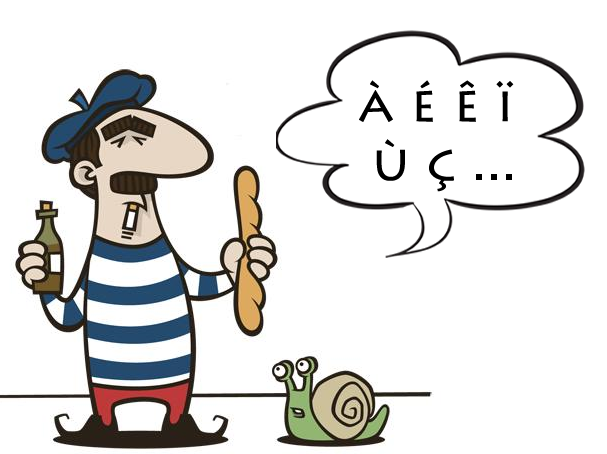Difference between revisions of "Language/French/Pronunciation/Accents/es"
(Created page with "La letra "é" no se pronuncia igual que la letra "è". Si usted es capaz de escuchar la diferencia, también sabrá cómo deletrear una palabra.") |
(Created page with "Aquí está la tabla de los acentos franceses:") |
||
| Line 16: | Line 16: | ||
La letra "é" no se pronuncia igual que la letra "è". Si usted es capaz de escuchar la diferencia, también sabrá cómo deletrear una palabra. | La letra "é" no se pronuncia igual que la letra "è". Si usted es capaz de escuchar la diferencia, también sabrá cómo deletrear una palabra. | ||
Aquí está la tabla de los acentos franceses: | |||
{| class="wikitable" | {| class="wikitable" | ||
Revision as of 19:44, 3 February 2017
Conocer los acentos franceses (les accent français) es esencial para una correcta ortografía en francés.
Los acentos en francés cambian la pronunciación y el significado de la palabra.
En esta lección, explicaremos cómo usar los acentos franceses.
5 acento
Hay cuatro acentos franceses para las vocales y uno para una consonante, la letra "c".
La letra "é" no se pronuncia igual que la letra "è". Si usted es capaz de escuchar la diferencia, también sabrá cómo deletrear una palabra.
Aquí está la tabla de los acentos franceses:
|
Writing |
Name |
Example |
Pronunciation |
|---|---|---|---|
|
é |
Accent aigu (acute accent) |
étudiant (student) |
|
|
à, è, ù |
Accent grave (grave accent) |
où (where), après (after), J'habite à Paris (I live in Paris) |
|
|
â, ê, î, ô,û |
Accent circonflexe (accent circumflex) |
forêt (forest), plâtre (plaster), île (island), tôt (early), août (August) |
|
|
ë, ï,ü |
Accent tréma (umlaut) |
Noël (Christmas), naïve (naïve), aigüe (acute) |
|
|
ç |
Cedille (cedilla) |
garçon (boy) |
|
Accent aigu (acute accent)
The acute accent is very frequent and can only be used with the letter "e".
Here are some useful words using the "é":
- écrire (to write) : J'aime écrire des lettres = I like writing letters
- été (summer) : Cet été j'irai à la plage = This summer I will go to the beach
- école (school) : Son école n'est pas loin d'ici = His school is not far from here
L'accent grave (grave accent)
The grave accent is only used with vowels "a", "e", and "u" like in:
- Après (after) : Après vous, je vous en prie = After you, please
- Où (where) : Où habites tu ? = Where do you live?
- À (to) : Je suis allé à Paris = I have been to Paris
L'accent circonflexe (accent circumflex)
The accent circumflex appear over any vowel and means that an S used to be in the word after the vowel.
- Forêt (forest) : J'aime marcher dans la forêt = I like to walk in the forest
- Hôpital (hospital) : Je dois aller à l'hôpital = I must go to the hospital
- S'il vous plaît (please) : S'il vous plaît, pourriez-vous m'aider = Could you please help me?
- Embûche (pitfall) : Ce parcours est semé d'embûches = This route is filled with pitfalls.
- Dégâts (damage) : L'ouragan a fait d'énormes dégâts = The hurricane caused a lot of damage.
Le tréma (umlaut)
The umlaut appears only over the vowels "e", "i" and "u".
You have to pronounce each vowel separately when you see this accent.
Words using the accent tréma include:
- Noël (Christmas) : Je serai à Paris pour Noël = I will be in Paris for Christmas
- Naïve (naïve) : Elle a l'air naïve = She looks naïve.
- Capharnaüm (mess). C'est un vrai capharnaüm ici = It's a real mess here
La cédille (cedilla)
The cedilla is also only found under the letter "c".
It changes a hard C sound (like K) into a soft C sound (like S).
Examples:
- français (French): Apprendre le français = Learn French
- ça (this) : ça me semble difficile = It looks hard
Pronunciation
The videos below will help you identify sounds of accents on the E letter :
Type French accent marks on your computer
How can you type the French accents if you don't have a French keyboard?
